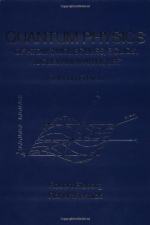|
This section contains 401 words (approx. 2 pages at 300 words per page) |
The nucleus is a membrane-bounded organelle found in eukaryotic cells that contains the chromosomes and nucleolus. Intact eukaryotic cells are comprised of a nucleus and cytoplasm. A nuclear envelope encloses chromatin, the nucleolus, and a matrix which fills the nuclear space.
The chromatin consists primarily of the genetic material, DNA, and histone proteins. Chromatin is often arranged in fiber like nucleofilaments.
The nucleolus is a globular cell organelle important to ribosome function and protein synthesis. The nucleolus is a small structure within the nucleus that is rich in ribosomal RNA and proteins. The nucleolus disappears and reorganizes during specific phases of cell division. A nucleus may contain from one to several nucleoli. Nucleoli are associated with protein synthesis and enlarged nucleoli are observed in rapidly growing embryonic tissue (other than cleavage nuclei), cells actively engaged in protein synthesis, and malignant cells. The nuclear matrix itself is also protein rich.
The genetic instructions for an organism are encoded in nuclear DNA that is organized into chromosomes. Eukaryotic chromosomes are composed of proteins and nucleic acids (nucleoprotein). Accordingly, cell division and reproduction require a process by which the DNA (or in some prokaryotes, RNA) can be duplicated and passed to the next generation of cells (daughter cells)
It is possible to obtain genetic replicates through process termed nuclear transplantation. Genetic replicas are cloned by nuclear transplantation. The first cloning program using nuclear transplantation was able, as early a 1952, to produce frogs by nuclear transplantation. Since that time, research programs have produced an number of different species that can be cloned. More recently, sheep (Dolly) and other creatures have been produced by cloning nuclei from adult animal donors.
The cloning procedures for frogs or mammals are similar. Both procedures require the insertion of a nucleus into an egg that has been deprived of its own genetic material. The reconstituted egg, with a new nucleus, develops in accordance with the genetic instructions of the nuclear donor.
There are, of course, cells which do not contain the usual nuclear structures. Embryonic cleavage nuclei (cells forming a blastula) do not have a nucleolus. Because the cells retain the genetic competence to produce nucleoli, gastrula and all later cells contain nucleoli. Another example is found upon examination of mature red blood cells, erythrocytes, that in most mammals are without (devoid) of nuclei. The loss of nuclear material, however, does not preclude the competence to carry oxygen.
|
This section contains 401 words (approx. 2 pages at 300 words per page) |


